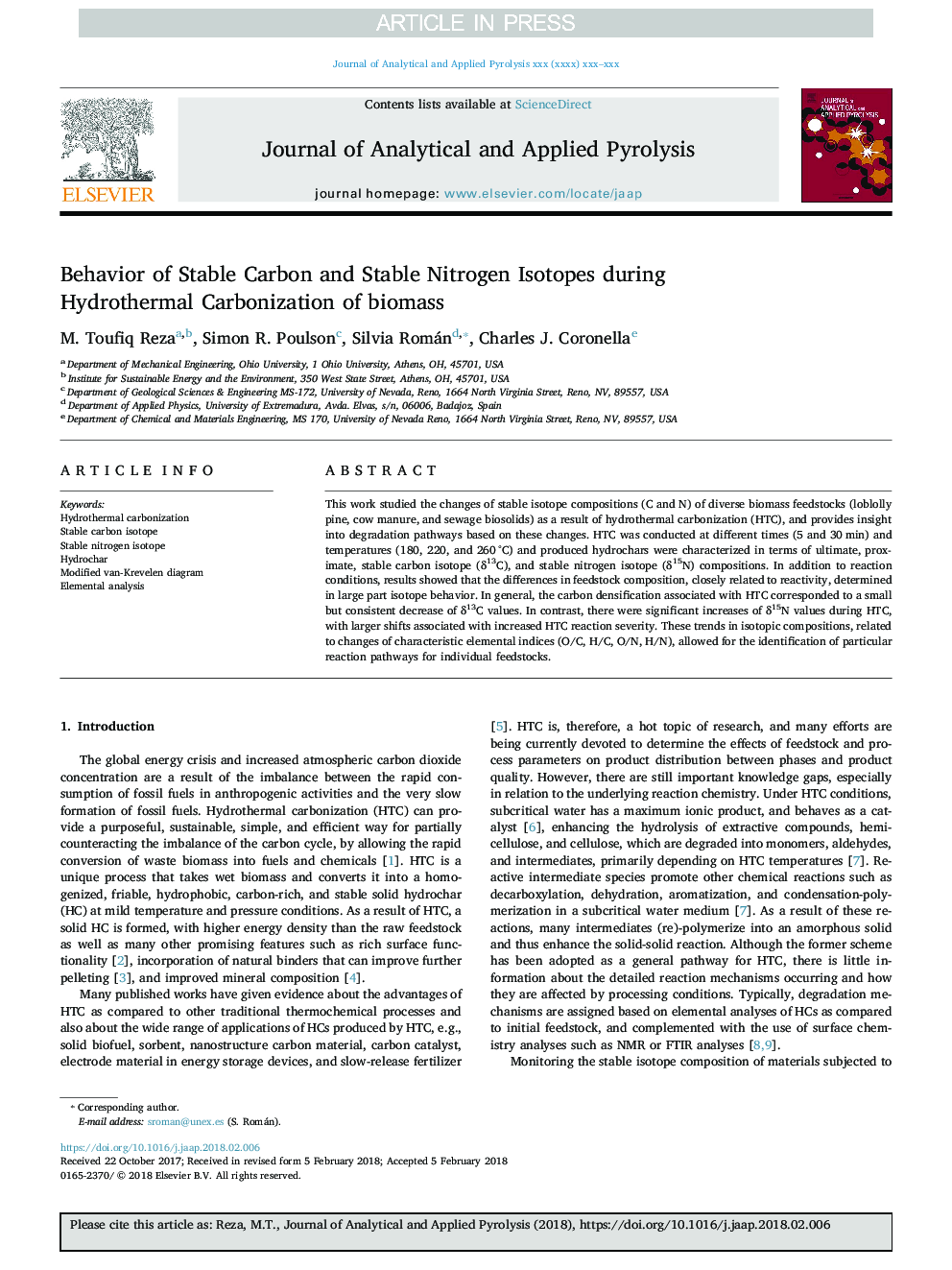| Article ID | Journal | Published Year | Pages | File Type |
|---|---|---|---|---|
| 7606346 | Journal of Analytical and Applied Pyrolysis | 2018 | 8 Pages |
Abstract
This work studied the changes of stable isotope compositions (C and N) of diverse biomass feedstocks (loblolly pine, cow manure, and sewage biosolids) as a result of hydrothermal carbonization (HTC), and provides insight into degradation pathways based on these changes. HTC was conducted at different times (5 and 30â¯min) and temperatures (180, 220, and 260â¯Â°C) and produced hydrochars were characterized in terms of ultimate, proximate, stable carbon isotope (δ13C), and stable nitrogen isotope (δ15N) compositions. In addition to reaction conditions, results showed that the differences in feedstock composition, closely related to reactivity, determined in large part isotope behavior. In general, the carbon densification associated with HTC corresponded to a small but consistent decrease of δ13C values. In contrast, there were significant increases of δ15N values during HTC, with larger shifts associated with increased HTC reaction severity. These trends in isotopic compositions, related to changes of characteristic elemental indices (O/C, H/C, O/N, H/N), allowed for the identification of particular reaction pathways for individual feedstocks.
Keywords
Related Topics
Physical Sciences and Engineering
Chemistry
Analytical Chemistry
Authors
M. Toufiq Reza, Simon R. Poulson, Silvia Román, Charles J. Coronella,
